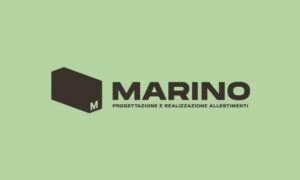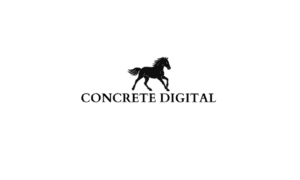Intangible asset valuation has proven to be undeniably complex. After all, it involves assigning value to assets that lack immense value. The controversial part is that despite being intangible, these assets add tremendous value to a company. There is also their unique nature, which, in most cases, makes it hard to use market data for comparisons. It explains why most businesses struggle to carry out their valuation, and that’s where expertise in intangible valuation comes in. Here is a guide to intangible asset valuation that businesses should consider when assessing and valuing these assets. Check it out!
What Are Intangible Assets?
An intangible asset is valuable to a business despite lacking a physical presence. However, the existing accounting standards often make it hard for these businesses to document these assets in their financial statements. It becomes pretty hard to value them unless you find the right expertise. No company can afford to ignore them, given their impact. Some of their roles include contributing to a business’s overall market valuation, influencing competitive advantage and driving revenue. A business with such an asset can choose to sell them or charge royalties or license fees for their usage.
Types of Intangible Assets
There are various types of intangible assets, including the following;
Contracts and Agreements
Some contracts and agreements, including distribution, supply, and licensing, contribute to a company’s revenue and profits. Therefore, their valuation is important despite their lack of physical presence. The risks associated with these contracts and agreements, how they contribute to the company’s cash flows and their terms and conditions often determine their value.
Software and Technology
As more companies embrace technology due to its various perks, it becomes a popular and valuable intangible asset. The same applies to software, which is part of the technology industry. Their values often depend on their market demand, potential, and future, not forgetting their functionality.
Customer Relationships
Customer relationship intangible asset valuation is also common, having proven important to companies. These customer relationships play a huge role in determining a business’s success, especially in the long term. Their value usually relies on the retention rates and customer loyalty the clientele has for the company. The cash flow that the customer base generates is also a key determinant.
Brand Equity
What customer loyalty does the brand name command? What about its contribution to the company’s value? That’s what brand equity is about. After all, a strong brand directly affects the company’s profitability and market share. Besides, building one and maintaining it is often a huge investment.
Intellectual Property
Intellectual property, often abbreviated as IP, comprises trade secrets, copyrights, trademarks, and patents. It is an asset to protect an organization’s brand, creativity and innovation. The value of these intangible assets depends on their potential to generate revenue, market demand and legal protection.
Intangible Asset Valuation Methods
During intangible value assessment, one can use various approaches. The method often depends on the type of intangible assets. Some of the most common options include;
Income Approach
Income approach intangible asset valuation calculates the income the asset will generate in the future. The experts will predict and discount its future cash flows to the asset’s present value. It is common when evaluating the value of assets such as customer relationships and trademarks. After all, such assets contribute to the revenue a company generates directly. Equally important, the future income of the assets is easy to predict within a reasonable range. The famous Discounted Cash Flow intangible valuation method is an excellent example of such an approach.
With-and-Without Method (WWM)
As the name suggests, the method carries out the valuation of intangible assets by comparing two companies. One of the companies has an intangible asset whose value is being valued, whereas its counterpart doesn’t. Therefore, the value of the intangible asset is the difference between the cash flow of the company that has it and the cash flow of the business that doesn’t. According to the method, the intangible asset brings in the extra cash flow, and that’s its respective value. However, the valuation approach is only an option if you can isolate the profit and revenue the assets contribute. That’s why it is common among non-compete agreements.
Market Approach
If there are similar asses that have either been licensed or sold, one can use the market data for reference. That’s the method’s guide to intangible asset valuation. It requires identifying an intangible asset similar to the one being valued. Then, one can use it to prove why a buyer should buy a similar asset, but only under normal conditions. It is common for companies to sell or buy intangible assets. It is popular in the entertainment, pharmaceutical and technology industries. Some assets where the market approach is appropriate include intellectual property such as copyrights, trademarks and patents. It is worth noting that it can be hard, if not impossible, to use this valuation method when buying or selling highly specialized or unique intangible assets.
Relief from Royalty Method (RRM)
It is also one of the intangible assets valuation methods for intellectual property such as copyrights, patents and trademarks. That’s why it is common in industries such as customer products, entertainment, pharmaceuticals and technology, where licensing is a regular practice. However, this approach is unique in that it focuses on the royalties the company would pay if it were to pay for the license for that particular intangible asset. It then equates the royalty payments to the asset’s value.
Cost Approach
How much will a company spend to buy or make that asset again? That’s the value the method uses to calculate an asset’s value. It assumes that the price of an intangible asset should be equivalent to the cost it takes to get or create it. It is most suitable for businesses whose assets have a clear cost. An excellent example is software tech firms with company brands that one can recreate.
Nevertheless, it isn’t a valuation method often associated with intangible asset valuation. After all, it is hard, if not impossible, for the approach to reflect the future financial benefits or market value of most intangible assets. However, this is one of the most appropriate intangible valuation methods if the asset doesn’t make the company money directly. It is also suitable if market data regarding income and sales is inadequate.
Importance of Expertise in Intangible Valuation
There are several instances when expertise in the valuation of intangible assets is crucial. Some of these cases include;
- Making the right judgments when predicting future events to promote accurate intangible valuation by striking the perfect balance between optimism and caution
- Create excellent valuation models that are adequate to determine accurate discount rates, forecast prospect cash flows, and assess risks.
- Interpreting and implementing intellectual property laws according to existing legal frameworks
- Mastery of industry dynamics such as technology, customer behaviour and competition
Final Words on Intangible Assets Valuation
The valuation of intangible assets is crucial despite being complex. It would help if you had it to make wise business decisions and plan strategically. Fortunately, this discussion covered the essentials, including the different types of intangible assets. There are also different intangible valuation methods. Lastly, there is an emphasis on applying the right expertise in intangible valuation for precise values. Consequently, the valuation will produce the true value of these intangible assets and make the right business decisions.





























